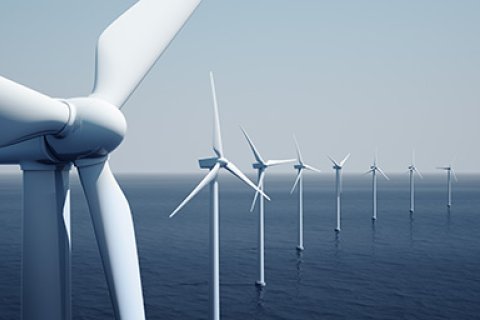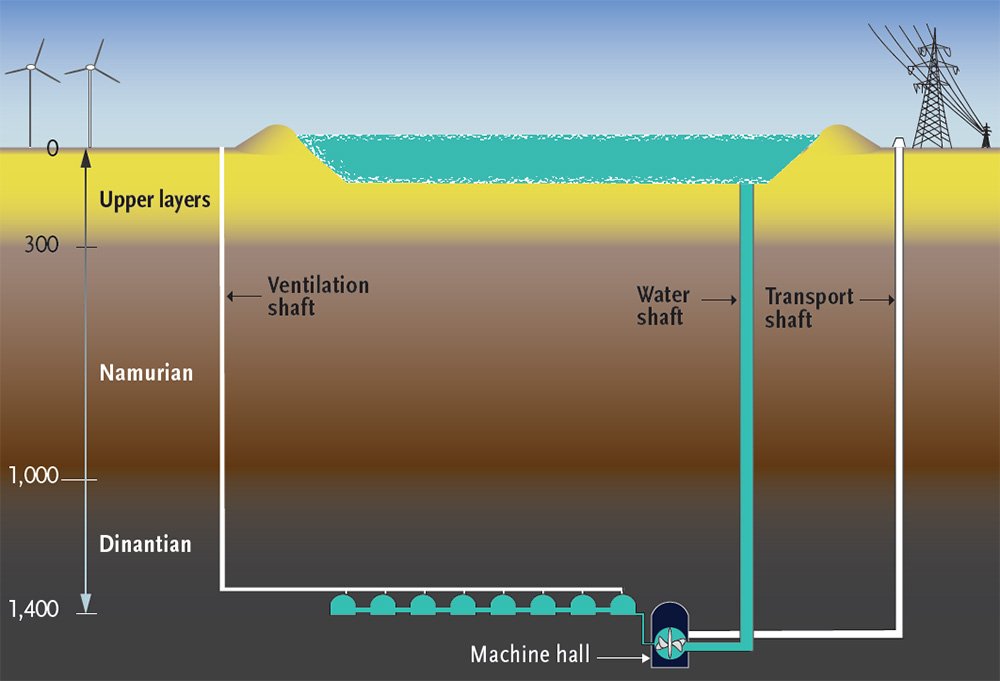Underground hydroelectric power plant essential to meet climate targets
Blue Battery, a spin-off from PhD research at Utrecht University, on 3 October 2018 presented its plan for an underground energy buffer in the Dutch province of Limburg. Research has demonstrated that it is both essential and feasible. Experts from science and industry and a project team have started preparations so that construction work can begin in two years’ time.
The use of wind and solar power is set to grow substantially. However, extreme fluctuations in production will give rise to problems, such as when there is no wind and the sun does not shine. Measures are needed to be able to compensate for these fluctuations in electricity supply, not only to be able to produce as much green energy as possible, but also to mitigate the risk of a black-out.

An energy buffer is intended to prevent such problems. Neighbouring countries use reservoirs for this purpose. If there is demand for electricity, water flows down from the reservoir through a turbine/generator. If there is an excess supply of electricity (for example when it is very windy at night), the water can be pumped back up again. Worldwide, 99 percent of all electricity storage is organised in this way. It is the only technology currently available for large-scale storage, without first requiring R&D. It is proven technology.
Blue Battery is now bringing this technology to the Netherlands, thanks to research conducted at the Copernicus Institute for Sustainable Development at Utrecht University. Dr Jan Huynen, Blue Battery’s founder, obtained his PhD for this research on 20 September. He calculated all the details required for constructing an underground hydroelectric power plant in Limburg. There will be a small (25 ha) reservoir above ground. Underground, there will be a second reservoir at a depth of 1.4 km in a homogeneous layer of bluestone. The water will circulate between these two reservoirs, as in a conventional hydroelectric power plant.
Because the difference in height is so great, very little water is needed to still be able to store a large amount of energy. The energy buffer that Blue Battery intends to build will be able to provide a million households with electricity for a whole day. Or, just as important, to keep Dutch industry running on a cloudy, windless day.

Expert group
The expert group which was set up on 3 October will conduct detailed surveys of locations in the province of Limburg. Earlier soil surveys revealed that the deep bluestone layer is extraordinarily stable. The underground region will be further mapped using new monitoring techniques. Further details will be added to the earlier design, so that construction can start in two years’ time. The energy buffer can then be operational by 2025.
Blue Battery will be developed by a partnership in which science, government and industry will closely collaborate. The experts involved include:
- Prof Gert Jan Kramer, Professor of Sustainable Energy Supply Systems at the Copernicus Institute for Sustainable Development at Utrecht University;
- Prof Han Vrijling, Professor of Hydraulic Structures at Delft University of Technology;
- Dr Jan Huynen, founder of Blue Battery;
- Jos Schneiders, former director of DSM Netherlands and former chair of Limburg Economic Development;
- Ruud Deckers, director of Blue Battery;
- Ruut Schalij, director of van eRiskGroup.
At the presentation of the construction project on 3 October 2018, Professors Gert Jan Kramer and Han Vrijling emphasised the importance of an energy buffer for the Dutch national grid. “Assuming we don’t want to rely on fossil fuel power plants again, there is insufficient electricity storage in the Netherlands. Blue Battery’s plan will provide such an energy buffer,” said Kramer. Vrijling added: “Now that its necessity has been demonstrated as well as its technical and economic feasibility, we need to take the next step and join forces with industry, government and business to turn it into a reality.”
Jos Schneiders emphasised that large-scale energy storage is also essential for security of supply. “Over three-quarters of our electricity is used for business purposes. Making industry more sustainable requires large-scale generation of green energy, for example from offshore wind farms. This will also require enormous buffer capacity to balance supply and demand. That’s what Blue Battery can provide.”

